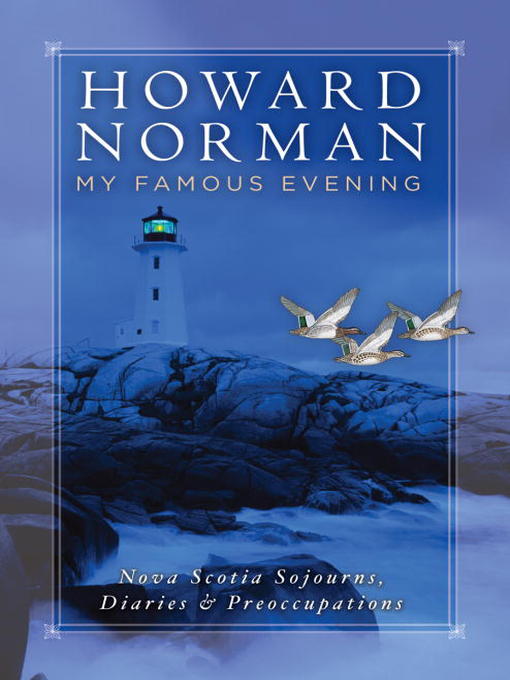Master storyteller Howard Norman draws on more than 30 years of visiting Nova Scotia for this remarkable ''book of selective memories.'' Combining stories, folklore, memoir, nature, poetry, and expository prose, the chapters of My Famous Evening ''may be seen as intersecting facets of reminiscence; there are certain refrains, themes, and preoccupations and I placed birds into as many of the book's nooks and crannies as possible.'' His goal: to portray the emotional dimensions of his experience.
Illustrated with photographs from Norman's own collection, this book offers a delightful, witty, and characteristically quirky take on a curious and beguiling region.
Read the story of Marlais Quire, a young woman who scandalously left her home in Nova Scotia in 1923 to travel to New York in an ill-fated attempt to attend a public reading by Joseph Conrad. Enjoy the delightful ''Birder's Notebook,'' a collection of stories about the Mi'kmaq cultural hero, Glooskap, and an account of Leon Trotsky's 1915 visit to Halifax, after a year in exile in New York, ''on his way to the October Revolution.'' For Norman, Nova Scotia is a place that provides a deep calm but also a ''sudden noir of the heart.''
From the Hardcover edition.
- Available now
- New eBook additions
- New kids additions
- New teen additions
- Most popular
- Beloved: Celebrating the Work of Toni Morrison
- Where the Crawdads Sing Read Alikes
- Try something different
- See all ebooks collections
- Available now
- New audiobook additions
- New kids additions
- New teen additions
- Most popular
- Try something different
- See all audiobooks collections



